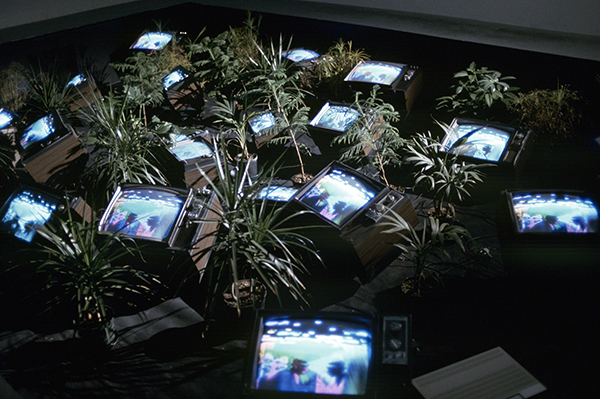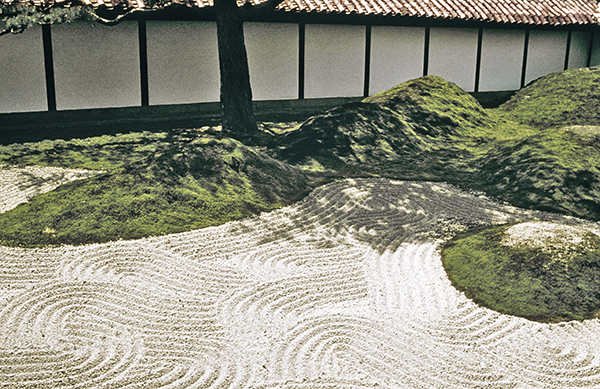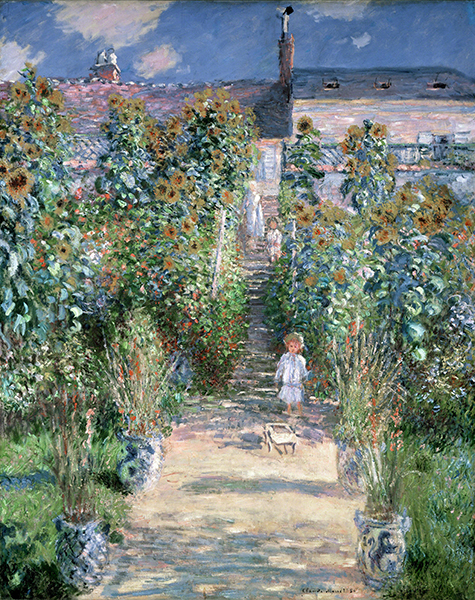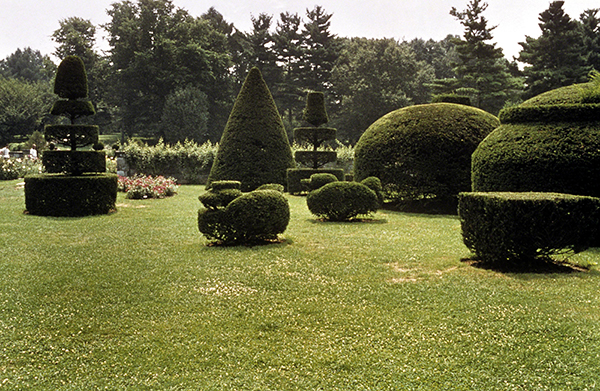Gardens for April
I’m pretty sure we all need some artistic diversions right now with the way things are in the world. April is not only National Garden Month, but it is also National Landscape Architecture Month. Because I feel like we all need to see something uplifting, I’m presenting you with Land Art or any art associated with nature for my “garden” motif.
 |
| Nam June Paik (1932–2006 US, born Korea), TV Garden, 1974. TV sets and plants. Photographed at Bonino Gallery, New York. © 2020 Artist or Estate of Artist. (8S-20912) |
The idea of mixing media and integrating art into life itself was a central aspect of the Pop Art movement. Artists from several countries, including the U.S., sought ways to extend the art experience into a theatrical situation or total environment. The logical result was the Happening, a performance that participating artists maintained could take place anywhere, not simply in a theater or art gallery. The earliest performances happened in 1959 in New York. The inevitable extension of art existing as performance within a space was the documentation of such events.
For some artists in performance, the immediacy of direct contact with the audience was crucial. With the advent of the widespread use of television in the early 1960s, the new medium was quickly appropriated by some artists as a tool to either augment a performance with sound and music or the be incorporated into other art forms as key elements. By the 1970s—when cheap video cameras were readily available—electronic documentation of performance and incorporation of a myriad of types of filmed phenomena became essential to the practice of Conceptual Art.
Korean artist Nam June Paik was known for his innovative use of video and electronics in sculptures and installations. Combining moving images with sculptural compositions gave a performance-like quality to otherwise stationary artworks. Televisions are often incorporated into his work. Utilizing objects that were quickly becoming central to many people’s lives, Paik pushed the boundaries of what is considered art. Because of his efforts, video installation is an increasingly popular and accepted art form.
Paik was born in Seoul but fled to Hong Kong when the Korean War (1950–1953) broke out. He graduated from Tokyo University in 1956, then went to Germany to study avant-garde music composition. There he met the avant-garde composer and artist John Cage (1912–1992). He became a member of the group Fluxus, a loose international collection of performance artists, visual artists, and musicians whose manifesto, like that of the original Dada artists, called for the overturning of perceptions of physical art in favor of perceptions, both visual and mental, of artistic process. His first one-person show in Germany was a groundbreaking arrangement of television that altered the look and content of conventional TV.
European topiary dates from ancient Roman times. Topiary is the practice of training and clipping perennial plants to form shapes, either geometric or fantasy shapes, such as elephants. The height of topiary garden popularity in Britain was during the 1500s and 1600s. One of the most outstanding topiary gardens in Britain can be found at Hampton Court outside of London, designed during the reign of Henry VIII (reigned 1509–1547) and later Charles II (reigned 1660–1685). Longwood Gardens is an estate built on land that was once part of William Penn's (1644–1718) charter with the British crown. It was purchased by a Quaker farmer George Peirce in 1700. His grandsons, Samuel and Joshua, developed it into an extensive botanical garden and arboretum in 1798. Their gardens included specimens from throughout the young United States. By 1850, the arboretum had one of the largest botanical collections in the U.S. Wealthy American businessman, Pierre S. du Pont (1870–1954), bought the estate in 1906 and developed the gardens into the spectacular collection visible today. Du Pont travelled throughout Europe, garnering ideas for making Longwood Gardens unique in American horticulture. He was impressed with the British "wilderness" gardens, but also the topiary style he saw at Hampton Court. He was also impressed with the geometrically shaped formal gardens of France and Italy. In 1936, Du Pont began to acquire trees of different species for the topiary garden. In 1939, he constructed a giant, floral sundial in this garden. When more species were added to the garden in 1958, the topiary contained fifty varieties from the U.S. and around the world. |
 |
| Mirei Shigemori (1896-1975, Japan, garden designer), Tofuku-ji, priests’ quarters (Hojo), south garden, Kyoto. Raked sand and moss hills. Image © 2020 Davis Art Images. (8S-10287) |
Temple gardens were often meant to symbolize a landscape in microcosm. This garden in the front of priests' quarters is the most stylized work among the four gardens of the temple. It is composed of four rock-composites symbolizing Elysian islands—from the east to the west named Eiju, Horai, Koryo, and Hojo—placed on the sand garden-floor (Hakkai meaning “the eight rough seas”), and five moss-covered sacred mountains at the right corner, the west side.
During the Kamakura period (1185–1333), Japan’s so-called “medieval” period, the provincial military families fought one another for control of the country. The Gempei Wars (1185–1192) witnessed the victory of the samurai-supported clans over the emperor’s court, and the institution of the shogunate, a military dictatorship that would rule Japan until the 1800s. The respected emperor no longer had any real power. The Muromachi Period (1392–1573) witnessed the period when the samurai families cemented their power over Japan.
From the Kamakura to the Muromachi periods, Zen Buddhism took a strong hold in Japanese religion. It was particularly favored by the samurai class because they lived without fear of death and acted spontaneously and intuitively. One of the overriding themes in Zen Buddhism is the experience of enlightenment when one least expects it. Meditation on the simple things in life encouraged preparing oneself for such an experience.
Zen Buddhism had a great influence on architecture from the Kamakura through the Edo periods. The elaborate over-decorated style of Chinese temple architecture was rapidly overtaken by the influence of earlier simple, light, and serene Japanese styles. The only Chinese influence seen in this temple is the tile roof. A significant element of temples from the Kamakura period until the 1800s was the emphasis on contemplation—of gardens, landscape, and moon—and with the tea ceremony. The garden was an integral part of temple architecture.
 |
| Claude Monet (1840–1926, France), Artist’s Garden at Vétheuil, 1880. Oil on canvas, (152 x 121 cm). © 2020 National Gallery of Art, Washington, DC. (NGA-P0352) |
Claude Monet was based in Vétheuil on the right bank of the Seine northwest from Paris from 1878 until he bought Giverny in 1881/1883. Monet reveled in working on gardens that became the subject of many of his paintings. His focus on details of nature, such as the flowers in his gardens, urged the artist to study the impact of decorative surface.
In this painting, the high horizon and screen of flowers force the viewer's eye to study the surface. In early paintings, Monet's brush work tended to imitate characteristics of what Monet was painting, such as waves in water, or blades of grass. By the 1880s, Monet was less obsessed with capturing nuances of light in nature as he was with a decorative surface where color is less descriptive and more physically evocative through thick, fluid buildup.
Correlations to Davis programs: Explorations in Art Grade 3: 4.24



Comments